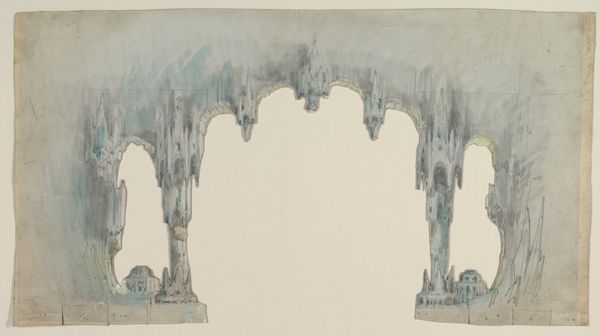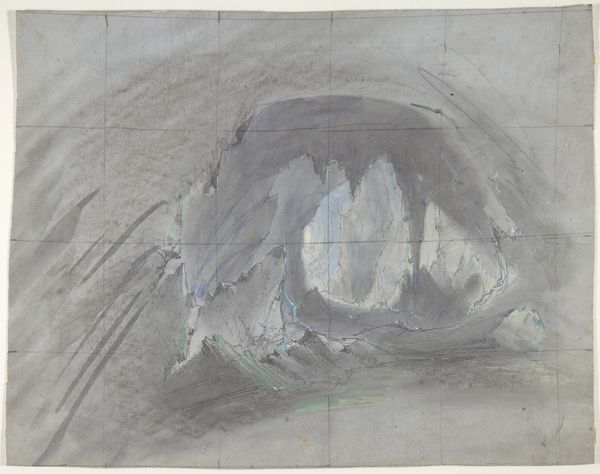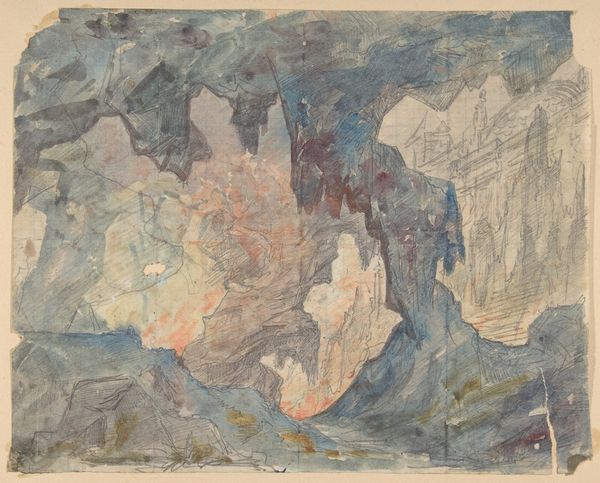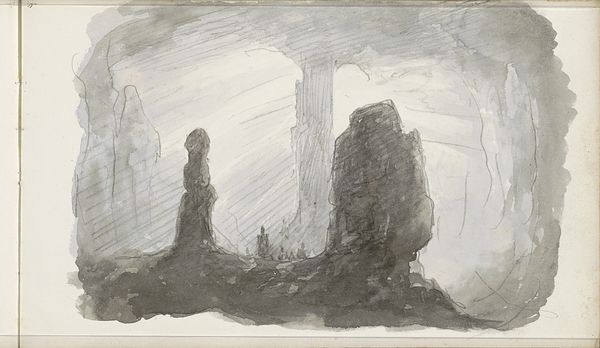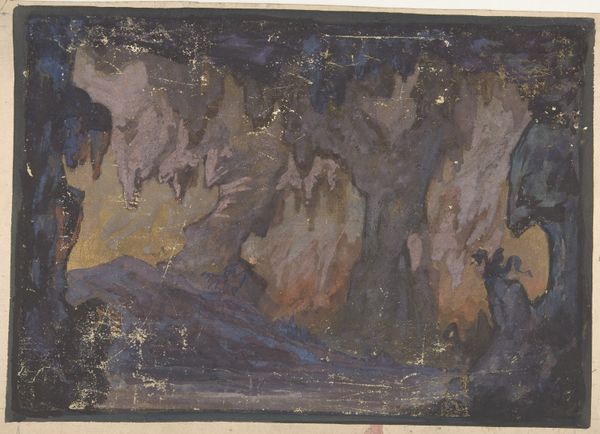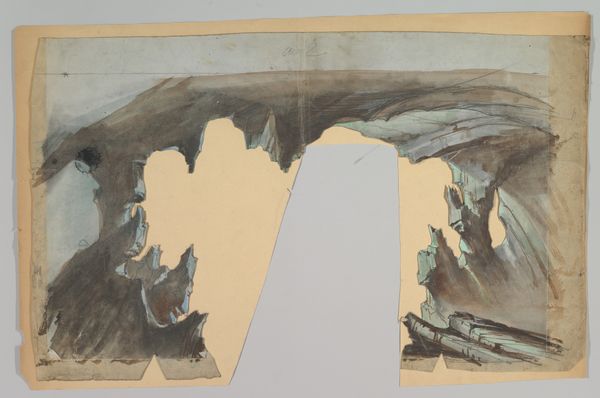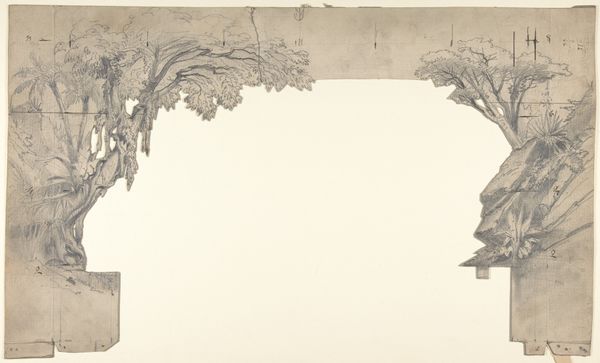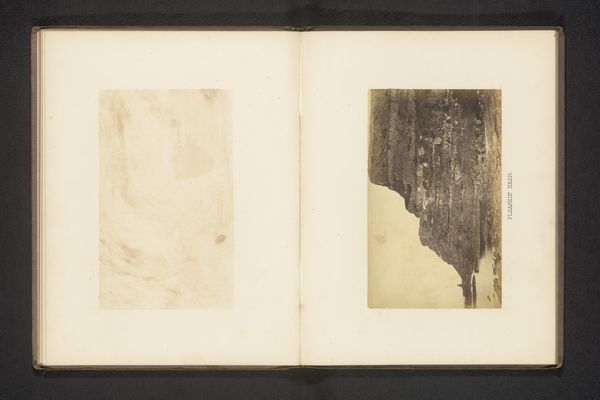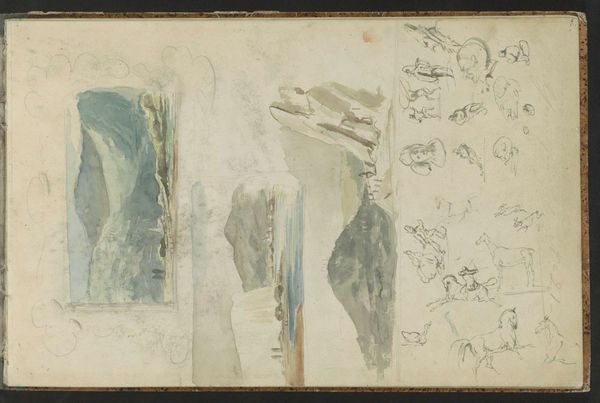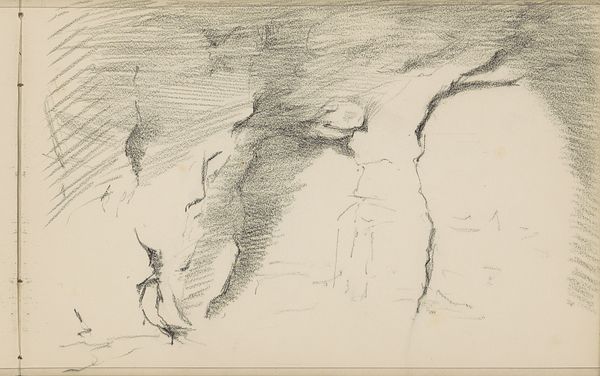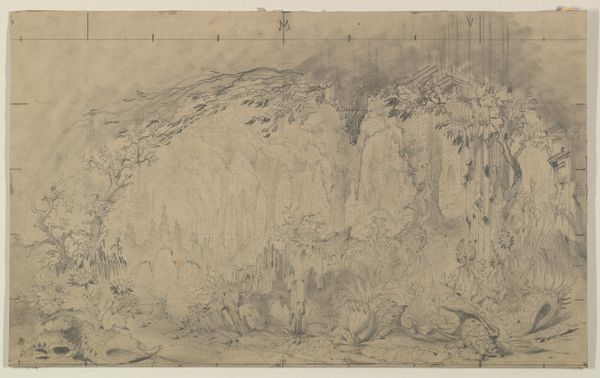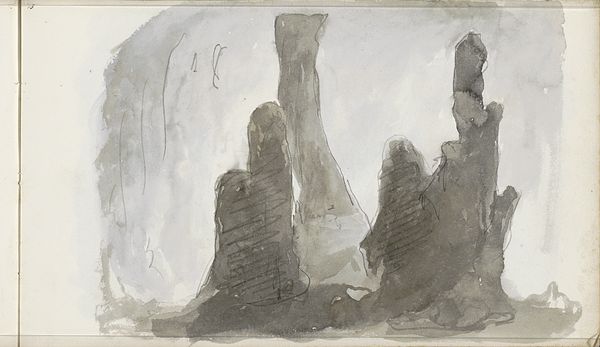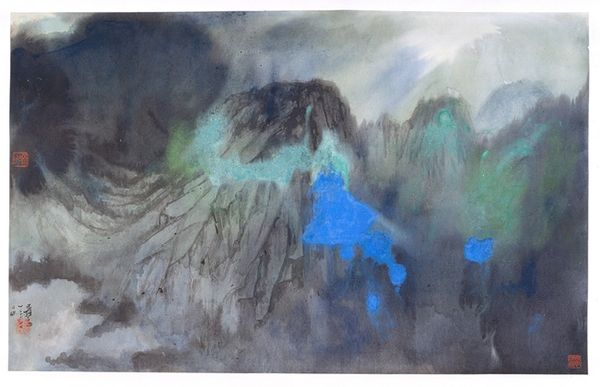
Copyright: Public Domain
Curator: Eugène Cicéri’s "Design for a Stage Set," dating from somewhere between 1830 and 1890, presents a fantastical interior. It's rendered primarily in watercolor. Editor: It strikes me as rather eerie, even ghostly. The cool tones and cavernous architecture suggest something vast and uninhabitable, almost like the set for a gothic drama. Curator: Indeed. Cicéri excelled at imbuing stage designs with specific moods. The deliberate use of watercolor allows for a fluidity and layering, creating depth and texture within a limited palette. Note how the washes create a sense of decay and age. Editor: That "decay and age" also speak to the materiality, don’t they? This isn't about illusion alone; the transparency of the watercolor emphasizes its own properties as a substance. You can almost feel the paper beneath, reminding us that this fantasy begins with mundane materials. What sort of labor would be involved in creating and transporting sets such as this, I wonder? Curator: That’s an interesting question. Though Cicéri was well known, Romanticism often idealizes the "artist genius", and occludes the team and infrastructure behind productions like this. Thinking about materials and labour reveals how Romanticism's concern with history and drama could also depend on new industrialized approaches to design. Editor: The structure and architecture also evoke social relations for me, in this case via consumption of Romantic dramas on stage, and therefore contributing to wider understandings of how materiality intertwines with societal and class structures. And that eerie sensation I felt initially? I suspect it arises from understanding this interplay between spectacle and the work required to bring it into being. Curator: It reframes how we look at not just Romantic art, but the social foundations that allow such dramatic visions to emerge. Thank you. Editor: Thank you. Considering it materially offers a potent reinterpretation.
Comments
No comments
Be the first to comment and join the conversation on the ultimate creative platform.
